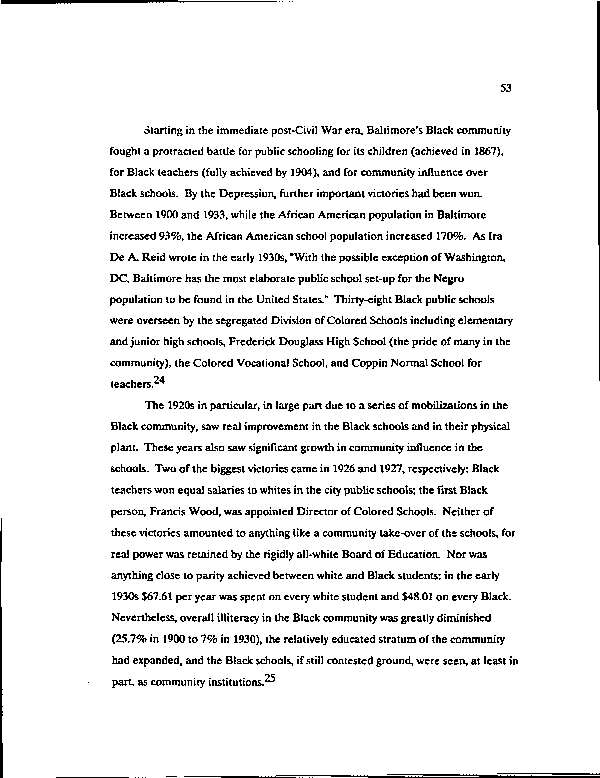|
53
Starting in the immediate post-Civil War era, Baltimore's Black community
fought a protracted battle for public schooling for its children (achieved in 1867),
for Black teachers (fully achieved by 1904), and for community influence over
Black schools. By the Depression, further important victories had been won.
Between 1900 and 1933, while the African American population in Baltimore
increased 93%, the African American school population increased 170%. As Ira
De A. Reid wrote in the early 1930s, "With the possible exception of Washington,
DC, Baltimore has the most elaborate public school set-up for the Negro
population to be found in the United States." Thirty-eight Black public schools
were overseen by the segregated Division of Colored Schools including elementary
and junior high schools, Frederick Douglass High School (the pride of many in the
community), the Colored Vocational School, and Coppin Normal School for
teachers.
The 1920s in particular, in large part due to a series of mobilizations in the
Black community, saw real improvement in the Black schools and in their physical
plant. These years also saw significant growth in community influence in the
schools. Two of the biggest victories came in 1926 and 1927, respectively: Black
teachers won equal salaries to whites in the city public schools; the first Black
person, Francis Wood, was appointed Director of Colored Schools. Neither of
these victories amounted to anything like a community take-over of the schools, for
real power was retained by the rigidly all-white Board of Education. Nor was
anything close to parity achieved between white and Black students: in the early
1930s $67.61 per year was spent on every white student and $48.01 on every Black.
Nevertheless, overall illiteracy in the Black community was greatly diminished
(25.7% in 1900 to 7% in 1930), the relatively educated stratum of the community
had expanded, and the Black schools, if still contested ground, were seen, at least in
part, as community institutions.^
|

